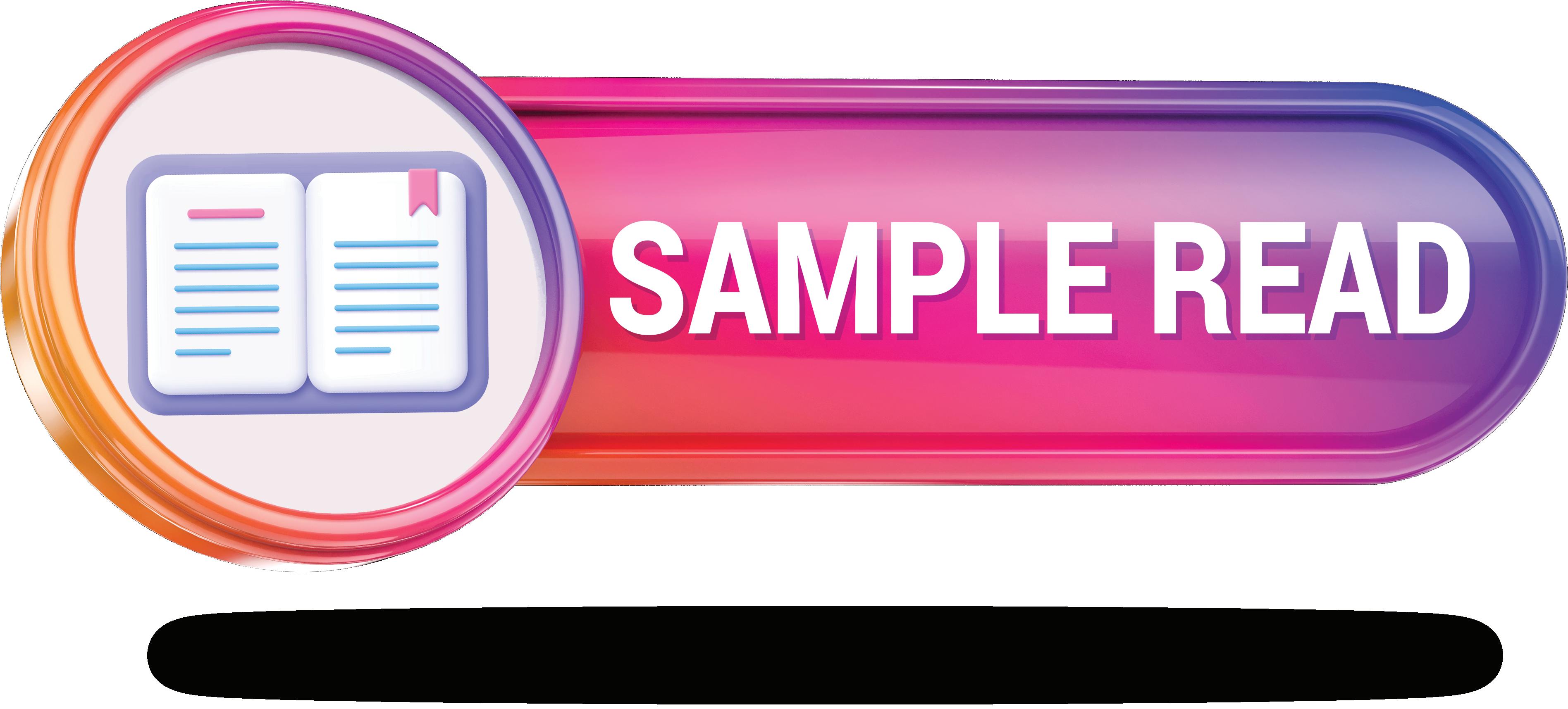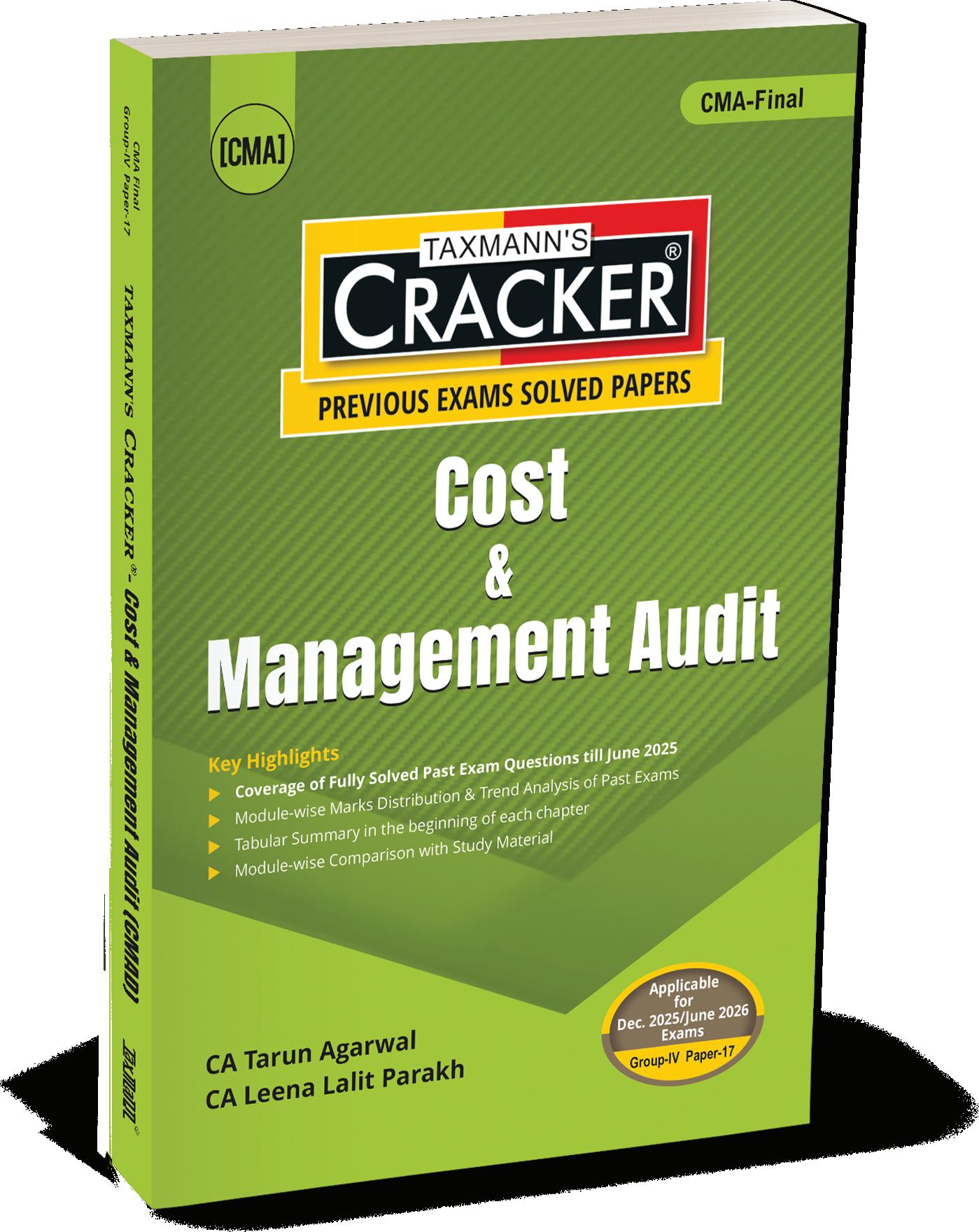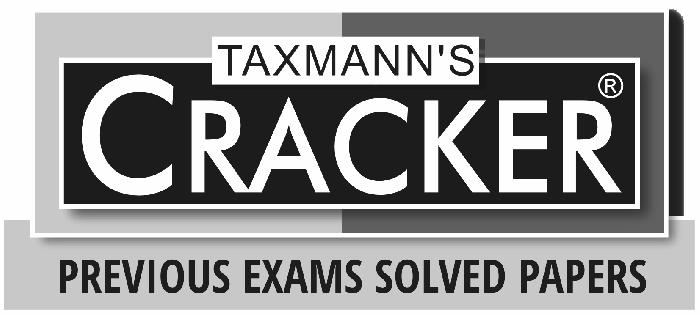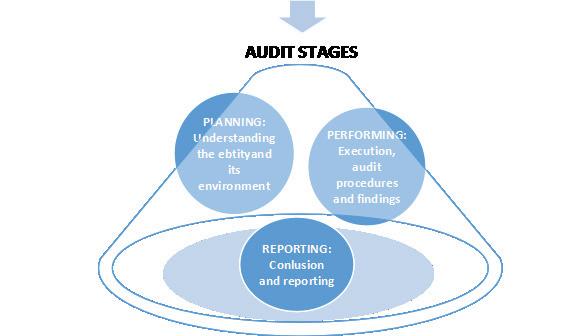© All rights reserved
Price : ` 695
First Published : October 2025
Published by :
Taxmann Publications (P.) Ltd.
Sales & Marketing :
59/32, New Rohtak Road, New Delhi-110 005 India
Phone : +91-11-45562222
Website : www.taxmann.com
E-mail : sales@taxmann.com
Regd. Office : 21/35, West Punjabi Bagh, New Delhi-110 026 India
Printed at :
Tan Prints (India) Pvt. Ltd.
44 Km. Mile Stone, National Highway, Rohtak Road Village Rohad, Distt. Jhajjar (Haryana) India
E-mail : sales@tanprints.com
Disclaimer
Every effort has been made to avoid errors or omissions in this publication. In spite of this, errors may creep in. Any mistake, error or discrepancy noted may be brought to our notice which shall be taken care of in the next edition. It is notified that neither the publisher nor the author or seller will be responsible for any damage or loss of action to any one, of any kind, in any manner, therefrom. No part of this book may be reproduced or copied in any form or by any means [graphic, electronic or mechanical, including photocopying, recording, taping, or information retrieval systems] or reproduced on any disc, tape, perforated media or other information storage device, etc., without the written permission of the publishers. Breach of this condition is liable for legal action.
For binding mistake, misprints or for missing pages, etc., the publisher’s liability is limited to replacement within seven days of purchase by similar edition. All expenses in this connection are to be borne by the purchaser. All disputes are subject to Delhi jurisdiction only.
MODULE 3 COST AUDITOR
CHAPTER 3.1
CHAPTER 3.2
COST AUDITOR’S ELIGIBILITY, QUALIFICATIONS, DISQUALIFICATIONS, APPOINTMENT, REGISTRATION, ROTATION, REMUNERATION, REMOVAL, RIGHTS AND DUTIES, LIABILITIES
CHAPTER 3.3
CHAPTER 3.4
DUTIES OF COST AUDITOR TO REPORT FRAUD – SECTION 143 OF COMPANIES ACT, 2013
CHAPTER 3.5 PUNISHMENT FOR FRAUD (SECTION 447 OF COMPANIES ACT, 2013) 3.14
CHAPTER 3.6
MODULE 7 COST AUDIT DOCUMENTATION, AUDIT PROCESS AND EXECUTION
CHAPTER 7.1
MODULE 8 PREPARATION AND FILING OF COST AUDIT REPORT
CHAPTER 8.1
CHAPTER
SECTION B MANAGEMENT AUDIT
MODULE 9 BASICS OF MANAGEMENT AUDIT
CHAPTER
CHAPTER
CHAPTER
CHAPTER
MODULE 10 MANAGEMENT REPORTING ISSUES AND ANALYSIS CHAPTER
MODULE 11 MANAGEMENT AUDIT IN DIFFERENT FUNCTIONS CHAPTER
MODULE 12 EVALUATION OF CORPORATE IMAGE
SECTION C
INTERNAL AUDIT, OPERATIONAL AUDIT & OTHER RELATED ISSUES
MODULE 14 INTERNAL CONTROL AND INTERNAL AUDIT
CHAPTER 14.1
MODULE 15
CHAPTER
CHAPTER
MODULE 16 AUDIT OF DIFFERENT SERVICE ORGANISATIONS
CHAPTER
CHAPTER
CHAPTER
COST AUDIT DOCUMENTATION, AUDIT PROCESS AND EXECUTION
A QUICK REVIEW
Audit documentation: Audit documentation means the material including working papers prepared by and for, or obtained and retained by the cost auditor in connection with the performance of the audit.
Audit file: Audit file means one or more folders or other storage media, in physical or electronic form, containing the records that comprise the audit documentation for a specific assignment or audit.
Audit working papers: Audit working papers are the documents which record all audit evidence obtained during audit. Such documents are used to support the audit work done in order to provide assurance that the audit was performed in accordance with the relevant Cost Audit and Assurance Standards.
AUDIT STAGES:
Figure below gives a pictorial view of these three stages.
A QUICK REVIEW
The Processes of Cost Audit can be explained through the connection between Activity Purpose Documentation at the planning, performing and reporting phases.
PAST EXAMINATION QUESTION
THEORY QUESTION
Q. 1 What are the 3 stages of audit? Analyse the 3 stages of audit. [June 2023, 8 Marks]
Ans. :
AUDIT STAGES
Planning: The planning stage involves determining the audit strategy as well as identifying the nature and the timing of the procedures to be performed. This is done to optimize efficiency and effectiveness when conducting an audit. Efficiency refers to the amount of time spent gathering audit evidence. Effectiveness refers to the minimization of audit risk. A well-planned audit will ensure that sufficient appropriate evidence is gathered to minimize risk of material misstatement at the cost statement level. The planning stage involves:
Gaining an understanding of the client,
Identifying factors that may impact the risk of a material misstatement in the cost statements,
Performing a risk and materiality assessment, and Developing an audit strategy.
Performing: The performance, or execution, stage of the audit involves detailed testing of internal controls, material consumptions, cost accumulation, allocation, apportionment, and absorption. If an auditor plans to rely on their client’s system of internal controls, they will conduct tests of controls. Cost auditor will conduct detailed substantive tests of audit procedures for the period and detailed substantive tests of consumptions and balances recorded at the period end. This detailed testing provides the evidence that the cost auditor requires to determine whether the cost statements have been fairly presented. The execution stage (or performing stage) of the audit involves the:
Performance of detailed testing of internal controls, and
Substantive testing of cost accounting policies & procedures.
Reporting: The final stage of the audit involves drawing conclusions based on the evidence gathered and arriving at an opinion regarding the fair presentation of cost statements. The cost auditor’s opinion is expressed in the cost audit report. At this stage of the audit, a cost auditor will draw on their understanding of the client, their detailed knowledge of the risks faced by the client, and the conclusions drawn when testing the entity’s controls, transactions, cost heads, item of cost and related disclosures.
The reporting stage involves evaluating the results of detailed testing in light of the cost auditor’s understanding of the entity and forming an opinion on the fair presentation of the entity’s cost statements as a whole.
7.3
PRACTICAL STEPS OF AUDIT PROCESS A QUICK REVIEW
Step-I: Objectives of Audit and Management Outlook
The cost auditor should understand whether the audit is meant only for meeting with the statutory requirements or the management does have any other expectations or outcomes in its mind from the cost audit, such as:
Cost optimization or cost reduction
Checking parameters of operational efficiency of a unit or any utility or any other function or department
Suggesting product diversification or changed product-mix
Identifying profit making or loss making products
Suggesting changed marketing strategies; market expansion; market diversification
Complete review of business strategies
Step-II: Pre-conditions
The cost auditor should fully understand the:
Objectives of cost audit
Area, nature and scope of audit
Number of cost auditors appointed
The applicable reporting framework
The reporting period
The statutory deadlines
The auditor should as certain whether the Management understands its scope of work and responsibilities for:
Maintenance of cost records & producing them to the cost auditor;
SECTION A : COST AUDIT
Preparation & presentation of cost statements & other details as per the applicable reporting framework, and in compliance with the cost accounting standards;
Selection and consistent application of appropriate cost accounting policies;
Allowing access to the auditor all information, including the books of account, vouchers, cost records, other records, documents, and other matters of the company, which are relevant to the preparation of the cost statements;
Providing additional information that the cost auditor may request from the management for the purpose of cost audit;
Allowing unrestricted access to persons within the company from whom the cost auditor determines and obtains cost audit evidence; and
Giving proper management representation.
The auditee and the cost auditor decides the audit fee and payment schedule; and finally, the cost auditor gets an engagement letter. All these are called pre-conditions of audit.
Step-III: Understanding the Company’s Business
The cost auditor is required to understand the company’s business, its corporate structure and various systems followed. The company related details and other general details include:
The company, its nature of activities, its size, product profile, unit locations, ownership structure, management structure, organizational structure, marketing set-up, accounting set-up, etc.
The nature of the industry or the sector in which client company operates
The applicable regulatory framework, financial reporting framework and cost reporting framework
The company’s production process, product details, joint or by-products, outsourcing, if any
Details of subsidiaries, associates and joint ventures
Key personnel in all departments including in Finance, Accounts, Costing, IT, Administration, Production, Purchase, Sales, etc.
Purchase policy, sales policy, pricing policy, export/import policy
Inventory receipt, storage, issue & pricing policies; physical verification system; inventory management system
Related parties and nature of transactions with them
Indirect tax structure, as applicable
Internal Control Systems followed by the company
Internal Audit System, its scope & adequacy of coverage as well as effectiveness
Accounting Systems & Policies followed by the company
Cost Accounting System & Policies followed by the company
Company’s MIS system, risk identification & management system
IT structure followed for financial accounting and for cost accounting, IT policy, control checks, authorization checks, IT data security policy
Previous auditor’s report
Step-IV: Planning the Audit
Planning the audit include:
Timing [dates] and duration [no. of days] of audit period including plan to visit the unit(s)
Level and number of audit personnel to be deployed including supervision and review of work done by the audit team
Audit partner to be deployed and his expected days & dates
Drawing up an overall audit plan and audit strategy – this will act as guide to the audit team
Deciding the materiality levels & sampling levels
Formulating appropriate audit procedures:
Management Representation
Management Assertion
Test of Controls
Test of Details
Substantive procedures
Analytical procedures
Formulating risk assessment strategies & procedures i.e. methodology to measure material misstatements
Planning for discussions with key personnel of the company, previous cost auditor, statutory financial auditor, and internal auditor
Key inputs for planning are:
Results of preliminary activities as specified above
Knowledge from previous audits and other engagements with the company
Knowledge of business
Nature and scope of the audit
Statutory deadlines and reporting format
Relevant factors determining the direction of the audit efforts
Nature, timing and extent of resources required for the audit
Documenting the Audit Plan and sharing it with the company
Ensuring adherence to the Guidance Manual for Audit Quality
Step-V: Execution of Audit
Performing the audit checks and procedures, as planned
Collecting all required audit evidence enabling the auditor to form his opinion










